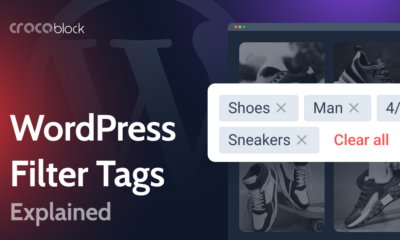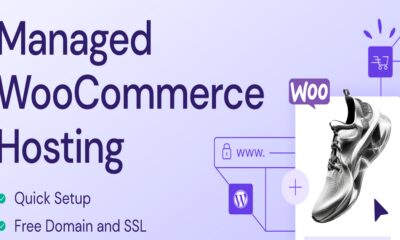Then: Writing code or installing plugins to use a custom font. Now: Welcome to the Font Library.
WORDPRESS
Unleash Creative Typography on Your WordPress.com Site – WordPress.com News

A website speaks to its visitors not only through its content and imagery, but also with its typography. A carefully selected font can set the site’s tone, convey emotion, and leave a lasting impression.
With the new Font Library on WordPress.com, you can now upload custom typography without the hassle of coding or the limitations of plugins. It’s not just about choosing fonts; it’s about effortlessly crafting an experience for your visitors.
Available on WordPress.com sites with the Creator or Entrepreneur plan, the Font Library allows you to manage your site’s typography in one place. Installing, removing, and activating or deactivating fonts across your entire site is a breeze.
To access the Font Library, head to the Site Editor and open the “Styles” side panel. Once there, select “Typography” and select the settings icon next to the “Fonts” heading.
Once in the Font Library, you will see the list of available fonts for your site: those that come with your theme, as well as any custom fonts you have installed.
There are two ways to install fonts:
- Manually upload the font files from the “Upload” tab
- Connect to Google Fonts on the “Install Fonts” tab, then download any selected fonts to your site
In addition to this high-level customization, the Font Library also provides granular control of the font weights that you’d like to enable, minimizing the effects on site speed because it’s only what you need that’s being loaded.
Level up your site by adding that extra touch of typography personality by using the Font Library, no code or plugins needed. To learn more, check out the support article.
Join 110.5M other subscribers
WORDPRESS
WordPress Filter Tags Explained – Crocoblock
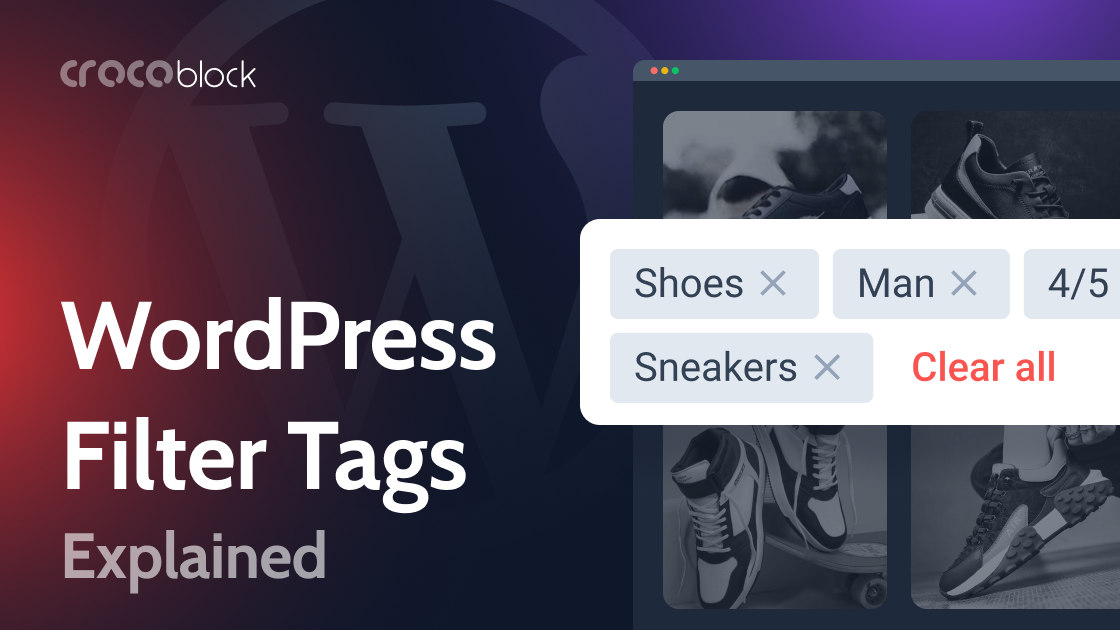
Is it possible to organize content on a WordPress site or blog so that it is quickly found by users and better indexed by search engines?
Of course! Use WordPress tag filters.
Tags are an underrated WordPress tool because more and more website owners and developers are using categories to organize content. But there are other ways, and tags can also help users find what they’re looking for, especially if you have a lot of content.
In this article, we will discuss tags, how they can help you, how to add them to your WordPress site, and how to use them for filtering content.
Table of Contents
Tags are an essential feature of WordPress, similar to keywords. You can combine different publications using a specific parameter, topic, or word and assign them a tag. When the user clicks on this tag, they will be taken to the section where different materials are collected, and materials that have this tag are displayed.
For example, if a WooCommerce website is dedicated to furniture, clicking on the “leather sofa” tag will allow the user to use the WooCommerce tag filter and see a page where leather sofas are collected.
This feature improves the user experience and helps search engines better understand your site’s content and relevance to potential visitors.
Both categories and tags serve the purpose of organizing content on a WordPress site. They represent two types of WordPress taxonomy: hierarchical and non-hierarchical.
A category is a hierarchical type of taxonomy, and a tag is non-hierarchical.
This means that while you can have parent and child categories, you can’t have parent and child tags.
Both categories and tags are used to classify and organize content on a WordPress site, but they serve slightly different purposes. Categories are often used for broad topics or themes because you can create a broader category, e.g., “Continents,” then add a “Countries” child category there, and then create the “Cities” child category. Just like folders on your computer.
Tags, in turn, are usually used for more specific or granular topics when nesting is not needed, or, vice versa, for very broad ones, which don’t need more specifying. For example, you have a blog with articles, videos, and podcasts about visual art. Also, you have different categories organized by movements, styles, etc. But you also want to filter posts by content types. So, you can add “Videos,” “Articles,” and “Podcasts” tags. Thus, users can select both topics and content types. Default WordPress posts have to belong to a certain category (by default, “Uncategorized”). But if you create a custom post type (CPT), it’s up to you whether to create taxonomies for them or not. If you want to add CPTs or taxonomies for them, JetEngine is one of the most advanced solutions on the market for not only creating but also managing them.
To add tags to your publication, create a new post/page/custom post, or click “Edit” on the existing one, and then in the right sidebar, add the desired tag:
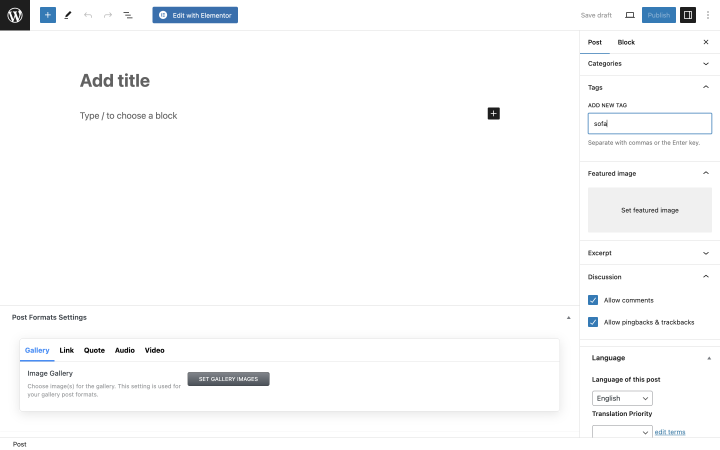
You can add multiple tags at once by separating them with commas.
Check the tags before publishing your finished post to ensure everything is correct. If you don’t understand what tag to use yet, WordPress allows you to choose from the most popular ones.
NOTE
Choose only tags that directly relate to the publication and will help your readers navigate your site.
How to Filter Content Using Tags?
Filtering content by tags is fairly easy. One can use tag filters in the following ways: adding them to a menu, using a dedicated filter plugin, or writing custom code.
Tag menu
If you want to add tags to the menus, go to Appearance > Menus > Screen Options and check the box next to tags. Now, you can add tags to the menu.
If you use tags a lot, making a separate menu containing them is a good idea and the simplest way to create a filter by tags. It can be displayed on a sidebar on one of the pages.
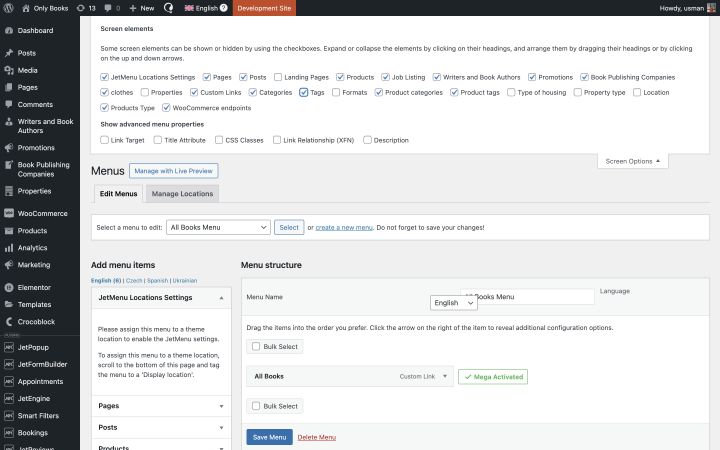

Using a filter plugin
If you want a more advanced approach to content organization and want your site to have not only tags but also filters, use additional plugins, such as JetSmartFilters.


The JetSmartFilters plugin allows you to create convenient filters on your page and filter your site content by various parameters.
The plugin has an Active Tags feature, which allows you to display active tags and, accordingly, see the content based on these tags. For example, users choose “humor” and “paper” tags and see books with such parameters. In the Active tags field, they can see these tags.
In this article, you will find detailed instructions on how to set up and activate this feature.
In addition, JetSmartFilters can help you add some other functionality related to tag filters. For instance:
- Remove applied filters. If you need a button that helps you remove all applied filters at once, add it with the Remove Filters feature. You can place it just in the right place, and when clicked, users can remove all the filters they have applied earlier. Here are detailed instructions.
- Active filters. If you want to show all active filters on the page, you can use the Active Filters widget. It showcases all currently applied filters and allows users to remove those that are not relevant one by one. Here are detailed instructions on how to use this feature.
Custom code
Last but not least, you can create tag filters by writing custom code. In this article, you can find a simple example of such a code.
FAQ
You can use WordPress’s built-in feature to add tags before publishing a post or employ additional plugins. Plugins usually have more functionality for organizing content on the site.
Tag filtering allows users to filter content by specific keywords and view only the pages and posts they want. A Tag filter in WordPress filters posts containing specific tags from your dashboard and search results.
Look at your new content’s topic and add related keywords. Choose words that will be relevant to your topic to help your users find the information they’re looking for faster. There must be frequently used words for your topic.
In Conclusion
Tags are a helpful option for quickly categorizing and organizing your content. They help users navigate within their areas of interest and help site owners deliver information correctly.
Tags are a built-in feature of WordPress that can be used without additional skills or plugins.
Of course, tags won’t replace filters or categories, but they help improve the user experience, so using them on blogs and other content-rich website types is a good idea.
WORDPRESS
From Beginner to Pro: How to Win at E-Commerce in 2024 (Detailed Guide)

E-commerce has not only reshaped the modern business landscape but also created inspiring success stories across the globe.
One such example is Nivetha Muralidharan, who transitioned from a software engineer to an e-commerce guru, founding her own agency that specializes in converting traditional businesses into online successes.
Similarly, the story of Flipkart, started by former Amazon employees Sachin and Binny Bansal, illustrates the vast potential of e-commerce. Beginning as a small online bookstore, Flipkart grew into one of India’s most valuable startups, eventually attracting a $16 billion investment from Walmart.
This article serves as your comprehensive guide to the e-commerce journey.
From the initial steps of setting up an online store to employing advanced strategies like leveraging artificial intelligence (AI) to improve customer interactions, we cover all you need to know to start, manage, and optimize your e-commerce business.
Join the ranks of success stories like Nivetha and Flipkart by mastering the fundamentals and exploring innovative e-commerce strategies detailed here.
What is ecommerce?
E-commerce, short for electronic commerce, refers to the transaction of goods and services through the digital medium, primarily the internet.
This broad domain includes various business models, each catering to different market needs:
- B2B (Business-to-Business): This model involves transactions between two businesses, such as a manufacturer and a wholesaler, or a wholesaler and a retailer. B2B e-commerce often involves bulk sales, which require complex logistical planning and longer sales cycles.
Platforms specialized for B2B transactions often offer features like order management systems, bulk pricing options, and detailed invoicing capabilities.
- B2C (Business-to-Consumer): The most common form of e-commerce, B2C transactions occur between businesses and individual consumers. This model includes online retailers who sell products or services directly to consumers without an intermediary.
B2C e-commerce is characterized by faster sales cycles, lower order volumes compared to B2B, and direct marketing approaches to entice the individual consumer.
- C2C (Consumer-to-Consumer): Popularized by platforms like eBay, Etsy, and Craigslist, C2C e-commerce allows individuals to sell goods and services to each other. This model has given rise to a vibrant marketplace for secondhand goods, handmade items, and personalized services.
It relies heavily on platform security, user verification processes, and effective transaction handling mechanisms.
- D2C (Direct-to-Consumer): D2C e-commerce is a newer model where manufacturers or producers sell directly to the end consumer, bypassing traditional retailers or intermediaries.
This approach allows businesses to gain more control over their brand presentation, customer experience, and profit margins. It often involves a significant focus on digital marketing, community building, and customer service.
E-commerce also varies in the types of goods and services sold, ranging from physical items like books and clothing to digital products such as software, and services like online courses or consulting.
The ecommerce operations can be supported by various backend functions including logistics, digital marketing, and customer service, tailored to each model’s specific needs.
Evolution and trends in ecommerce
The trajectory of e-commerce has been profoundly influenced by the rapid evolution of technology and the shifting habits of consumers.
Starting in the 1990s with the commercialization of the internet, e-commerce has transformed from a novel concept into a fundamental business practice, featuring prominently across global markets.
Historical perspective
Initially, ecommerce was limited by the technology of the time and consumer trust issues. Early adopters were few, and systems were not as robust or secure.
However, as internet technology improved, and secure payment gateways became standardized, more businesses and consumers began embracing online transactions.
The dot-com boom of the late 1990s and early 2000s saw a surge in e-commerce businesses, some of which are now leading global retailers.
Current ecommerce trends
Today, ecommerce is characterized by several key trends that are shaping its future:
AI in ecommerce
Artificial intelligence is revolutionizing e-commerce operations by enhancing user experiences through personalized shopping and customer service. AI-driven systems analyze customer data to predict buying patterns, recommend products, and manage inventory more efficiently.
AI is also pivotal in optimizing logistics and supply chain strategies, making e-commerce operations more responsive to market demands.
Mobile shopping
With the increase in smartphone usage, mobile commerce (m-commerce) has grown exponentially. Consumers appreciate the convenience of shopping from anywhere at any time, which has led businesses to prioritize mobile-friendly websites and apps.
This shift demands responsive web design and mobile-specific marketing strategies to capture the mobile-savvy consumer base.
E-commerce SEO and marketing
As the ecommerce space becomes more crowded, effective search engine optimization (SEO) and comprehensive e-commerce marketing strategies have become crucial.
Businesses are investing in SEO to improve their online visibility and drive organic traffic to their sites. Additionally, targeted digital marketing campaigns using social media, email, and content marketing are key to engaging potential customers and building brand loyalty.
Personalization and customer experience
E-commerce businesses are focusing more on delivering personalized shopping experiences. By using data analytics and machine learning, online retailers can create individualized content, offers, and product recommendations, leading to higher engagement and conversion rates.
Sustainability and ethical practices
Increasingly, consumers are considering the environmental and social impact of their purchases. E-commerce brands that adopt sustainable practices, such as eco-friendly packaging and ethically sourced products, are gaining favor among conscientious buyers.
Global expansion and cross-border ecommerce
As technology bridges geographical gaps, more e-commerce businesses are exploring international markets. This expansion is supported by improved logistics, multi-lingual customer support, and localized marketing efforts, making it easier to sell and ship products globally.
These trends highlight the dynamic nature of e-commerce, continually driven by innovation and consumer expectations.
As we look to the future, these elements are expected to play even more significant roles, pushing the boundaries of what e-commerce platforms can achieve and offering new opportunities for businesses and consumers alike.

Starting an ecommerce business
When launching an e-commerce business, the initial steps you take can determine your long-term success.
Choosing the right products or services to offer and understanding your market and audience are foundational elements that require careful consideration and strategic planning.
Choosing the right product or service
The cornerstone of any successful e-commerce business is its product or service offering. When selecting what to sell, consider the following factors:
- Market Demand: Assess the current demand for potential products or services. Tools like Google Trends and social media analysis can provide insights into what consumers are interested in and how these interests change over time.
- Competition: Evaluate the competitive landscape. Identify direct competitors and analyze their offerings, pricing, and marketing strategies. Look for gaps in the market where you can offer something unique or of better quality.
- Profitability: Consider the cost of sourcing, storing, and shipping your products. Some products may have higher initial profits but might be more expensive to manage due to storage or shipping requirements. Digital products or dropshipping models can reduce overhead costs and simplify logistics.
Conducting market research
Effective market research involves gathering and analyzing data to better understand your industry and target customers. This process should guide your business decisions and strategy:
Who are your potential customers? What are their age groups, interests, spending habits, and preferences? This information can help tailor your marketing efforts and product offerings.
Where are your customers located? Understanding the geographic distribution of your potential market can influence product choices, marketing strategies, and shipping logistics.
Be aware of any trends that could affect your product categories. Seasonal fluctuations can significantly impact sales, and being prepared for these changes can help maintain steady revenue.
Identifying target audiences
Identifying and understanding your target audience is critical to tailoring your e-commerce strategy.
Start by segmenting your market based on demographic, geographic, and behavioral criteria. This segmentation can help create more targeted and effective marketing campaigns.
You’ll then need to understand what your customers value, having this information can help in designing your product line and your marketing messages. Customer feedback, surveys, and engagement on social media can provide valuable insights.
Finally, position your brand and products in a way that appeals to your target audience. This involves not only the functional attributes of your products but also the emotional and psychological aspects that can resonate with your audience.
By taking the time to choose the right product or service, conduct thorough market research, and clearly identify your target audiences, you set a strong foundation for your e-commerce business.
These steps are crucial in ensuring that your business not only meets existing market demands but also stands out in the competitive online marketplace, positioning it for long-term growth and success.
E-commerce platforms & websites
Choosing the right e-commerce platform is critical, as it affects everything from the user experience to the ease of site management. Ecommerce website builders like Shopify, Magento, and WooCommerce offer different features and scalability options.
Shopify

Overview: Shopify is a highly popular e-commerce platform known for its ease of use and all-in-one hosted solution, meaning you don’t need to worry about buying separate hosting. It’s designed to help individuals and businesses build their online stores quickly and efficiently without requiring technical skills.
Key features:
- User-friendly interface: Shopify is celebrated for its simple, clean, and intuitive admin panel, which is great for beginners.
- Integrated payment solutions: It offers its own payment gateway, Shopify Payments, as well as integration with numerous other payment processors.
- Scalability: Shopify can scale with your business, from small startups to large enterprises, and supports various sales channels including online, in-store, and social media.
- App ecosystem: A vast marketplace of apps and plugins that can add functionality and customize your store.
Magento (Adobe Commerce)

Overview: Magento, now known as Adobe Commerce, is an open-source e-commerce platform that offers robust features and unlimited customization options, making it ideal for medium to large enterprises with more complex e-commerce needs and the resources to manage them.
Key Features:
- Customization: Being open-source, it allows for deep customization of every aspect of the store, from the user interface to the backend processes.
- Scalability: It handles large inventories and complex functionalities better than most platforms, making it suitable for businesses planning to scale quickly.
- Community and Professional Support: A large community of developers and professional support from Adobe ensure continuous improvements and enterprise-grade support.
- Integrated B2B Functionality: Offers features designed specifically for B2B sellers, including quote management, credit purchases, and custom catalogs.
WooCommerce

Overview: WooCommerce is an open-source e-commerce plugin for WordPress. It is a great choice for small to medium-sized businesses already familiar with WordPress or those seeking to extend a WordPress site into an e-commerce platform.
Key features:
- WordPress integration: Perfect integration with WordPress makes it a go-to choice for users who are already comfortable with the WordPress environment.
- Cost effectiveness: The core software is free, though many extensions and themes are paid, but generally, it’s considered a cost-effective option for startups.
- Flexibility: It supports physical, digital, and even affiliate products. Like Magento, it’s highly customizable because of its open-source nature.
- Large plugin ecosystem: Access to thousands of WordPress plugins and themes to extend the functionality and design of your e-commerce site.
Choosing the right platform
When selecting between Shopify, Magento, and WooCommerce, consider your specific business needs, technical capabilities, and growth plans.
Shopify might be best for those who need simplicity and quick setup, Magento for large businesses needing a highly customizable platform, and WooCommerce for existing WordPress users looking for an easy extension to e-commerce.
Each platform offers unique advantages and could be the right choice depending on your particular requirements.
Setting up an ecommerce website
Once you’ve chosen a platform, setting up an effective e-commerce website involves several critical steps:
Step One – Domain Name: Your domain name should be memorable, align with your brand, and be easy to type. A good domain name can make a significant difference in marketing and brand recognition. Secure a domain name that is straightforward and reflects your business.
Step Two – Hosting: Reliable hosting is crucial to ensure your website remains accessible at all times. Hosting solutions should offer excellent uptime, fast servers, and good customer support. Some e-commerce platforms offer their own hosting, which may simplify setup and maintenance.
Step Three – Website Design: The design of your website should reflect your brand’s aesthetic and appeal to your target audience. It should be visually appealing and functional, offering a good balance between beauty and usability. Ensure that your website design is mobile-friendly, considering the increasing prevalence of mobile shopping.
Step Four – Security: E-commerce sites must be secure to protect sensitive customer information such as credit card numbers and personal details. Ensure your platform supports HTTPS/SSL for secure connections, and comply with PCI DSS (Payment Card Industry Data Security Standard) requirements.
By carefully choosing an e-commerce platform and meticulously setting up your website, you create a solid foundation for your online business. This foundation supports not only current operational needs but also future growth and expansion, ensuring that your e-commerce venture is built for success.
Operational aspects of e-commerce
A robust operational framework is vital to the success of any e-commerce business. This includes not only how the website functions but also how products are managed and delivered.
Let’s delve deeper into the essentials of e-commerce website operations and the critical components of inventory management and shipping logistics.
E-commerce website essentials
For an e-commerce website to thrive, it must excel in several key areas:
- Well-Designed Product Pages: Each product page should provide detailed information, including high-quality images, comprehensive descriptions, specifications, price, and availability. Additionally, incorporating elements like customer reviews, ratings, and related products can enhance user experience and aid in purchase decisions.
- Seamless Checkout Process: A streamlined checkout process reduces cart abandonment and enhances customer satisfaction. This involves minimizing the number of steps to purchase, offering multiple payment options (including mobile payments and digital wallets), and ensuring transparency in pricing and fees throughout the process.
- Mobile Optimization: With a significant portion of online shopping done via mobile devices, ensuring your website is mobile-friendly is essential. This includes responsive design that adjusts to different screen sizes, easy navigation, and touch-friendly interfaces. Mobile optimization also affects search engine rankings, further emphasizing its importance.

Managing inventory and shipping
Effective management of inventory and shipping operations is crucial for maintaining service quality and operational efficiency.
Here’s how businesses can optimize these areas:
Efficient Inventory Management
Proper inventory management ensures that you have the right amount of product, at the right time, to meet consumer demand without overstocking or stockouts. Implementing automated inventory management systems can help track stock levels in real-time, forecast demand based on historical data, and trigger alerts when it’s time to reorder.
Real-Time Inventory Updates
Integrating real-time inventory updates on your e-commerce site helps maintain accurate stock levels on the website, reducing the chance of customer disappointment due to order cancellations. This transparency can enhance customer trust and satisfaction.
Reliable Shipping Policy
Clear and reliable shipping policies are fundamental for customer satisfaction. This includes offering various shipping options that balance speed and cost, providing tracking information, and ensuring that packaging is secure and appropriate for the items being shipped.
Automated Shipping Systems
Automation can streamline the shipping process, reduce errors, and increase efficiency. Automated systems can generate shipping labels, track shipments, and update customers automatically, thereby improving the overall customer experience.
Handling Returns
Efficient handling of returns is also a critical aspect of e-commerce operations. A clear, straightforward returns policy and a simple process for customers to follow can help in retaining customers who might otherwise be dissatisfied with their purchase.
By optimizing these operational aspects, e-commerce businesses can enhance their efficiency, improve customer experiences, and ultimately drive greater success.
Each element from website design and checkout optimization to inventory and shipping management plays a critical role in building a reliable and successful online business.
E-commerce marketing and sales strategies
Effective ecommerce marketing and sales strategies are pivotal for the success of any e-commerce business. They help in not only attracting new customers but also retaining them over the long term.
Digital marketing for e-commerce
Digital marketing encompasses a variety of strategies tailored to reach and convert online consumers. Here are some key strategies:
- Search Engine optimization (SEO): E-commerce SEO involves optimizing your website and its content to rank higher in search engine results pages (SERPs). This includes using the right keywords, optimizing product descriptions and images, and ensuring your website has all the necessary technical optimizations to enhance visibility and drive organic traffic.
- Content marketing: Effective content marketing can help attract customers through valuable and relevant content that addresses their needs and interests. This might include blogs, buying guides, how-to articles, and videos that not only help in SEO but also provide value to your audience, building trust and authority in your niche.
- Pay-Per-Click (PPC) advertising: PPC campaigns can drive immediate traffic to your e-commerce site. Platforms like Google Ads and Bing Ads allow you to display ads in search engine results and on partner websites, targeting specific demographics and keywords.
- Social Media advertising: Utilizing platforms like Facebook, Instagram, Twitter, and Pinterest can help you reach a vast audience. Social media ads can be highly targeted based on user demographics, interests, behaviors, and more, making them effective for generating leads and driving sales.
- Email marketing: Email remains one of the most effective marketing tools for e-commerce businesses. It allows for direct communication with your customers, enabling personalized offers, newsletters, and updates that can encourage repeat purchases and foster brand loyalty.
Customer engagement and retention
Engaging with your customers effectively and maintaining their interest is crucial for building a loyal customer base.
Incorporating interactive elements such as live chat and AI-powered chatbots on your website can improve customer service by providing instant assistance and answers to customer queries.
This real-time interaction enhances the shopping experience and supports conversion and retention rates.
Using data analytics to offer personalized product recommendations can significantly enhance the shopping experience. By analyzing past behavior, preferences, and purchases, you can suggest relevant products to your customers, increasing the likelihood of purchases.
Implementing loyalty programs that reward repeat customers with discounts, special offers, and exclusive deals can enhance customer retention. These programs encourage customers to return and make additional purchases.
Actively seeking customer feedback and facilitating product reviews can lead to greater customer engagement. Feedback helps you understand customer needs and improve your offerings, while reviews provide social proof that can influence the buying decisions of new customers.
Remarketing involves targeting customers who have visited your website but did not make a purchase. Through targeted ads and follow-up emails, you can re-engage these potential customers, increasing the chances of converting previously missed opportunities.
By employing these digital marketing and customer engagement strategies, e-commerce businesses can attract a diverse audience, convert them into customers, and retain them for long-term success.
Each element plays a crucial role in building a robust online presence and a loyal customer base.
E-commerce SEO
Optimizing your e-commerce site for search engines is essential for enhancing your online visibility and attracting more customers.
Effective e-commerce SEO involves several key elements that are crucial for improving your search engine rankings and driving organic traffic.
- Optimized product descriptions: Each product description should be unique, informative, and include relevant keywords that potential customers might use when searching for that product. This not only helps in SEO but also improves the user experience by providing valuable information.
- Keyword optimization: Conduct thorough keyword research to identify the terms and phrases that potential customers are using. Incorporate these keywords naturally into your product titles, descriptions, meta descriptions, and URLs to help search engines understand and rank your pages.
- Mobile optimization: With the increasing use of mobile devices for online shopping, having a mobile-friendly website is crucial. Google uses mobile-first indexing, which means it predominantly uses the mobile version of the content for indexing and ranking. Ensure your site is responsive, loads quickly on mobile devices, and provides a seamless shopping experience.
- Site structure and navigation: A well-organized site structure helps search engines crawl your site more effectively. Use a logical hierarchy for your product categories and links, and ensure your navigation is easy for users to follow.
- Technical SEO: Address technical SEO aspects such as fast loading speeds, secure connections (HTTPS), and the elimination of duplicate content. Implement structured data (schema markup) to enhance your listings in search results, which can improve click-through rates.
By focusing on these aspects of e-commerce SEO, you can significantly improve your site’s visibility in search results, attracting more traffic and potential customers to your online store.
How to choose ecommerce products
Selecting, presenting, and pricing products are critical components of running a successful e-commerce store. Each element plays a vital role in attracting customers and driving sales.
Selecting products for your e-commerce store
Choosing the right products is foundational to your e-commerce success. Conduct market research to identify trends, customer preferences, and potential niches.
Consider factors such as profitability, shipping costs, and supplier reliability. It’s essential to select products that not only have a proven market demand but also align with your brand values and target audience.
Product presentation and listings
Effective product presentation is crucial. High-quality images, detailed descriptions, and clear specifications help customers make informed decisions.
Utilize multiple photos from various angles and include videos if possible to enhance the visual appeal. Your product listings should be SEO-friendly, incorporating targeted keywords to improve search engine rankings and visibility.
Pricing strategies
Developing a competitive pricing strategy is key to attracting and retaining customers. Consider both cost-plus pricing and market-oriented pricing strategies.
Analyze your competitors’ prices to ensure your pricing is competitive but also allows for a reasonable profit margin. Employing psychological pricing tactics, such as pricing products just below a round number (e.g., $29.99 instead of $30), can also subtly enhance the attractiveness of your prices.
Regularly review and adjust your pricing based on market conditions, customer demand, and overall business goals.
By meticulously managing these aspects of your e-commerce products, you can optimize your product offerings to meet customer expectations and drive business growth.
Advanced ecommerce techniques
Advancements in technology have given rise to sophisticated techniques that can significantly enhance e-commerce operations.
Utilizing data and analytics, and integrating AI and automation are at the forefront of these advanced strategies.
Utilizing data and analytics
Data and analytics are indispensable for understanding customer behavior and optimizing e-commerce strategies.
Key Performance Indicators (KPIs) such as conversion rates, average order value, customer lifetime value, and traffic sources are crucial for monitoring and measuring e-commerce success.
Tools like Google Analytics offer comprehensive insights into user behavior, traffic patterns, and effectiveness of marketing campaigns. By analyzing this data, businesses can identify successful elements of their online presence and areas that require improvement.
For instance, if the data shows high cart abandonment rates, strategies can be developed to address this issue, potentially increasing sales.
The role of AI and automation
Artificial Intelligence (AI) and automation are transforming e-commerce operations across multiple dimensions:
- Customer Service: AI-powered chatbots can handle customer inquiries 24/7, providing instant responses to common questions and issues. This not only enhances the customer experience but also reduces the workload on human customer service teams.
- Personalized Shopping Experiences: AI algorithms analyze customer data, past behavior, and purchasing patterns to deliver personalized product recommendations and promotions. This level of personalization can significantly enhance the customer experience and increase the likelihood of repeat purchases.
- Optimized Logistics and Supply Chain Management: AI can optimize inventory management and logistics, predicting demand to ensure the right products are in stock and automating routing and scheduling for deliveries. This results in more efficient operations and can reduce costs.
- Marketing and Sales Strategies: AI tools can automate and optimize marketing campaigns, adjusting in real time based on customer interactions and engagement. This allows for highly targeted marketing that is more likely to convert.
- Fraud Detection: AI systems are capable of identifying potential fraudulent activities by analyzing patterns that deviate from the norm, enhancing security for both the business and its customers.
Incorporating these advanced techniques into e-commerce operations not only streamlines processes but also provides a significant competitive advantage.
By leveraging data and analytics and embracing AI and automation, e-commerce businesses can enhance efficiency, improve customer satisfaction, and ultimately drive growth and profitability.
Challenges and solutions in e-commerce
Operating an e-commerce business is not without its hurdles.
From logistical challenges to legal and ethical concerns, there are numerous obstacles that businesses must navigate to ensure smooth operations and maintain customer trust.
Addressing common e-commerce challenges
Managing Customer Expectations: In the digital age, customers have high expectations for service, delivery, and quality. To manage these expectations, clear communication is key. Ensure that product descriptions are accurate and comprehensive, and policies regarding returns and deliveries are transparent and well-communicated. Utilizing customer feedback systems can also help identify areas needing improvement.
Ensuring Timely Deliveries: Delivery delays are a common issue in e-commerce. To mitigate this, optimize your logistics and supply chain strategies. Partnering with reliable shipping providers and maintaining good inventory practices can help avoid delays. Additionally, providing customers with tracking information and proactive updates can improve the experience, even when delays occur.
Maintaining a Secure Online Presence: Cybersecurity threats pose significant risks to e-commerce businesses. Implement robust security protocols such as SSL certificates, data encryption, and secure payment gateways to protect customer information. Regular security audits and staying updated on the latest cybersecurity trends are also crucial.
Legal and ethical considerations
Compliance with E-commerce Regulations: E-commerce businesses must adhere to a complex array of regulations that vary by country and region, including consumer protection laws, data protection directives, and tax obligations. Staying informed about relevant legislation and seeking legal advice can help ensure compliance. Implementing compliant practices not only avoids legal penalties but also enhances your reputation.
Maintaining Ethical Practices: Ethical concerns, particularly related to privacy and data usage, are increasingly important to consumers. Be transparent about how you collect, use, and store customer data. Implement privacy policies that protect user data and provide customers with options to control their information, such as easy-to-use privacy settings and customer data access requests.
Sustainability Practices: Ethical considerations also extend to sustainability. Consumers are increasingly favoring businesses that demonstrate environmental responsibility. Adopting sustainable practices, such as using eco-friendly packaging and supporting fair trade products, can enhance your brand’s appeal and contribute to customer loyalty.
By proactively addressing these challenges and adhering to legal and ethical standards, e-commerce businesses can build a strong, trusted relationship with customers, ensuring long-term success and stability in the competitive online marketplace.
Final thoughts
The potential of e-commerce is immense, offering myriad opportunities for businesses to expand and innovate.
By utilizing the strategies outlined in this guide, entrepreneurs can effectively build and grow their e-commerce ventures, ensuring sustained success in the digital marketplace.
FAQs
What is e-commerce with an example?
E-commerce, short for electronic commerce, refers to the buying and selling of goods and services over the internet.
It encompasses a variety of transactional processes conducted online, ranging from ordering digital content for immediate online consumption to purchasing conventional goods and services.
Example: An individual purchases a new laptop from an online store like Amazon. They select the laptop, place it in their virtual shopping cart, complete the payment process online, and the laptop is shipped to their address.
How do I start my e-commerce business?
To start an e-commerce business, follow these steps:
- Choose a Niche: Identify a product category that interests you and meets a specific market demand.
- Market Research: Conduct thorough research to validate your idea, understand your target audience, and analyze competitors.
- Select a Business Model: Decide whether you’ll dropship, hold inventory, or manufacture your own products.
- Choose an E-commerce Platform: Select a platform like Shopify, WooCommerce, or Magento based on your technical skills, budget, and customization needs.
- Set Up Your Online Store: Customize your website, add products, and set up payment and shipping options.
- Launch Marketing Campaigns: Use SEO, content marketing, PPC advertising, and social media to attract customers to your store.
- Analyze and Optimize: Monitor your store’s performance and make improvements to enhance user experience and increase sales.
What are the four main types of e-commerce?
The four main types of e-commerce are:
- B2C (Business-to-Consumer): Businesses sell goods and services directly to consumers online. Example: Netflix subscriptions.
- B2B (Business-to-Business): Transactions between businesses, such as a manufacturer and a wholesaler, or a wholesaler and a retailer. Example: Office supplies from Office Depot to businesses.
- C2C (Consumer-to-Consumer): Consumers sell goods or services to other consumers. Example: eBay or Craigslist.
- C2B (Consumer-to-Business): Individuals sell goods or services to businesses. Example: A freelance graphic designer creating logos for a business.
Is eccommerce worth it?
E-commerce can be highly rewarding if managed correctly. It offers access to a larger market, the convenience of shopping from anywhere, and often lower costs.
However, success requires an understanding of digital marketing, customer service, and the technical aspects of running an online store. It’s a competitive field but can yield substantial returns with the right strategy and commitment.
Can e-commerce make you wealthy?
Yes, e-commerce has the potential to make you wealthy, but it isn’t guaranteed. Success depends on factors such as choosing the right niche, having a robust online presence, effective marketing, and a bit of luck.
Many e-commerce entrepreneurs have built prosperous businesses, but like any business, it requires hard work, persistence, and smart strategies.
Is e-commerce a good side hustle?
E-commerce can be an excellent side hustle, offering the flexibility to manage your business from anywhere and potentially providing a significant income stream.
It can start as a part-time endeavor and grow into a full-time business. However, it requires time to manage inventory, fulfill orders, provide customer service, and market your products.
How difficult is e-commerce?
E-commerce can be challenging due to intense competition, the need for continual marketing efforts, and the logistics of managing an online business.
Success often depends on selecting the right niche, effective marketing, optimizing the customer experience, and scaling operations. It’s accessible to beginners but does require learning and adapting to many facets of running a business online.
WORDPRESS
How to choose the best eCommerce platform for your online store
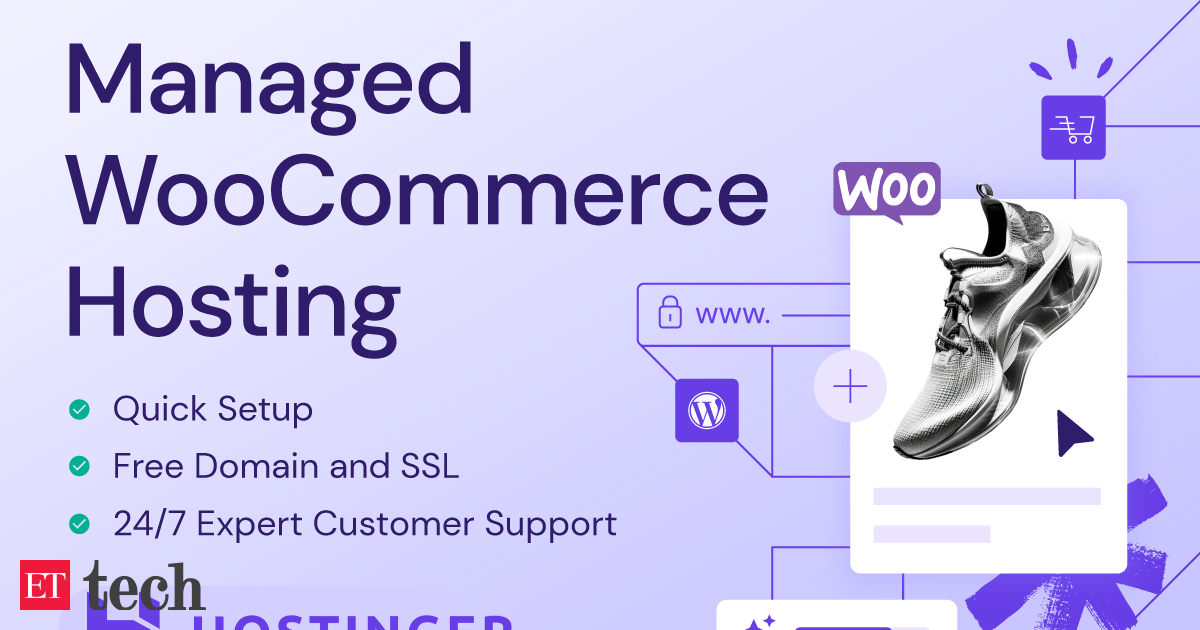
Selecting the best eCommerce platform for your needs can help improve customer experience, streamline management, and increase sales.
In this article, we’ll show you six essential factors to consider when choosing an eCommerce platform for your online store.
WordPress vs. WooCommerce Hosting
WordPress hosting is developed for WordPress websites in general.
Meanwhile, WooCommerce hosting is specifically designed for WordPress websites using WooCommerce. This specialised eCommerce hosting includes optimised features for managing products and orders. It also provides improved performance and security measures tailored to the needs of online stores.
Factors to consider when choosing an eCommerce platform
When selecting an eCommerce platform, consider these key features to support a successful online store:
Discover the stories of your interest
1. Performance
Pay attention to the eCommerce platform’s speed, uptime, and optimisation tools.
Your platform should ensure fast page loads and high uptime rates. These factors directly impact customer satisfaction and SEO rankings.
As for optimisation tools, look for features like caching, content delivery networks (CDN), and servers that enhance the overall performance of your store.
2. Scalability
A good eCommerce platform should be able to handle large traffic. You want to be able to expand into new markets without having to do a complete system overhaul.
Therefore, your eCommerce platform should be able to dynamically adjust resources like bandwidth and storage to meet changing demands. Look for cloud-based services that offer elastic scalability, which automatically scale up during traffic spikes.
Platforms that let you add new features easily are also preferable because they can adapt to your changing needs.
3. Pricing
Along with the previous point on scalability, look for an eCommerce platform with clear and transparent pricing without any hidden fees. This lets you understand the total cost upfront, which is crucial for effective budget planning.
Moreover, you should carefully evaluate what is included in each plan to make sure you are getting the best return on your investment.
It helps to shortlist a few platforms and compare their pricing structures to determine which one offers the most value for your business needs. When deciding on pricing, consider the long-term benefits and potential growth of your business.
4. Security
Security is paramount in protecting your business and customer information.
Your chosen eCommerce platform should come with essential security features, such as SSL certificates, secure payment gateways, and compliance with PCI-DSS standards. These measures will help safeguard sensitive data.
Make sure to choose a platform that proactively monitors potential threats and regularly updates its security measures.
5. Ease of use
The platform should offer a clean, intuitive interface that makes managing an online store easy, even for those without technical expertise.
Automation features are particularly beneficial. By automating routine tasks such as inventory management and tax calculations, you can save time and minimise the risk of human error.
6. Technical support
The ideal eCommerce platform provides 24/7 support, ensuring that help is available whenever you need it, regardless of the time of day.
The quality of customer support is just as important as its availability. The support team should be knowledgeable and responsive, capable of quickly and effectively resolving any issues that arise.
This helps minimise downtime and maintain a seamless shopping experience for your customers.
Hostinger’s Managed WooCommerce Hosting: Elevate your eCommerce platform
Hostinger’s Managed WooCommerce Hosting plans are designed to offer optimised performance through dedicated resources, ensuring your site runs smoothly even during peak traffic. Therefore, you can focus on growing your business.
 ET Spotlight
ET SpotlightThe onboarding process is straightforward and user-friendly, making it accessible to everyone, including those new to eCommerce.
Here are the key features of Hostinger’s Managed WooCommerce hosting:
- One-click WooCommerce Installation: Quickly launch your store with an easy one-click setup. This feature allows you to start customising your store immediately, eliminating complex technical steps.
- Performance Optimisation: Enhance your store’s responsiveness with LiteSpeed Cache and advanced CDN options. They significantly reduce loading times to ensure a smooth customer experience.
- Enhanced Security: Protect your online store with strong security measures such as regular malware scans, complimentary SSL certificates, and DDoS protection. These precautions help secure your data and safeguard customer information.
- Daily Backups: Automatic daily backups ensure that your store’s data is always secure and can be quickly restored whenever needed.
- Dedicated Support: Enjoy around-the-clock access to WooCommerce experts who are ready to assist you with any questions or issues. This way, you can minimise any potential downtime for your store.
Pricing
There are four Managed WooCommerce Hosting plans to choose from. Take a look at this comparison table to find the one most suited for your needs:
Each plan offers varying levels of storage, WooCommerce optimisation, traffic load, and security features. This variety ensures that there is a Hostinger plan suitable for businesses of any size.
We recommend starting out with the Cloud Startup plan, which offers the best value for money and gives you more options when you need to scale up.
Use the custom code ET10 during checkout to receive a 10% discount.
Hostinger also offers a 30-day money-back guarantee. This gives you the peace of mind to try out their services without risk and see if they meet your needs.
 ET Spotlight
ET SpotlightConclusion
Selecting the appropriate eCommerce platform impacts every aspect of your online store, from the user experience to the transaction process. Here are the key factors when choosing the right eCommerce platform:
- Performance
- Scalability
- Pricing
- Security
- Ease of use
- Technical support
Among many WooCommerce solutions available out there, Hostinger stands out for its value and features.
Hostinger checks all the boxes when it comes to what you should look for in an eCommerce solution. It is scalable, secure, cost-effective, easy to use, and backed by excellent technical support. It gives your online store a solid foundation to succeed in the competitive online market.
-
SEARCHENGINES6 days ago
Daily Search Forum Recap: May 21, 2024
-

 MARKETING3 days ago
MARKETING3 days agoXngage and HawkSearch join forces with a powerful connector
-

 SEO7 days ago
SEO7 days agoInternational SEO For 2024: 9-Point Checklist For Success
-
SEARCHENGINES5 days ago
Daily Search Forum Recap: May 22, 2024
-

 PPC7 days ago
PPC7 days ago8 Fast Takeaways from Google Marketing Live 2024
-

 PPC6 days ago
PPC6 days agoRunning Performance Max Against Brand is a Waste
-

 WORDPRESS4 days ago
WORDPRESS4 days ago11 Best WordPress Paywall Plugins (Free and Paid Options)
-

 SEO6 days ago
SEO6 days agoOptimizing Interaction To Next Paint: A Step-By-Step Guide


